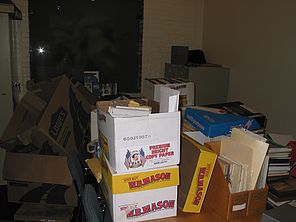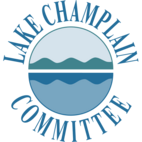Cleaning Out
April 2011

We spent much of the last month moving the offices of the Lake Champlain Committee. The move gave us an opportunity to weed through our files and cull much of the material that no longer seems relevant. It’s amazing how many papers accumulate over time. Homes and offices build up waste and periodic cleansings rid the space of excesses. So what about the lake? What happens to the excesses that fill-up Lake Champlain?
For over 10,000 years, sediments have been pouring into Lake Champlain. The pace of sedimentation has increased dramatically with development of the landscape, but it is not a new phenomenon. Much of what is now the Champlain Valley used to be part of Lake Champlain. Slowly, the lake fills in.
In the past 70 years or so we have succeeded in adding not only sediments, but additional phosphorus – food for algae -- to the lake. I say 70 years because advances in chemistry brought about during World War II have allowed us to more efficiently utilize phosphorus and move it around the globe. Phosphorus became readily available for fertilizing crops, and agricultural extension agents encouraged farmers to add what we would now consider excessive amounts to fields and cow feed. Phosphorus was particularly important in detergents where it grabbed dirt particles and kept them from falling back onto the clothes or dishes people were trying to clean. By 1959 the typical laundry detergent in the U.S. contained 7-12% phosphorus by weight.
The phosphorus that has been brought into the Lake Champlain watershed is still with us. Phosphorus can strongly attach to soil particles and become almost unavailable, but it does not disappear. Each year rainstorms and snow melt wash phosphorus added to the land decades ago into Lake Champlain.
Once in the water there are few places phosphorus can go. A relatively small amount of it will actually flow through the lake and out the Richelieu River. Much of it, however, will be deposited with sediment at the bottom of the lake. Most of the deposited phosphorus is essentially taken out of the system but under certain conditions, particularly in shallower bays, the phosphorus can be recycled into the water column. A significant fraction can be incorporated into living material. This phosphorus is first taken up by algae and plants and then passed to animals or deposited at the bottom when the organisms die.
Steven Carpenter at the University of Wisconsin has studied the build up of phosphorus in the Lake Mendota watershed. He concludes that capping all phosphorus inputs into the watershed at pre-industrial levels would allow the watershed to begin recovering, but it would take close to 1,000 years.
Of course, we still bring much more phosphorus into the watershed each year than we send out. In another paper, Carpenter noted that world-wide each person is responsible for about 3.5 pounds of phosphorus entering the water each year. Ninety percent of that comes from fertilizer and animal feed – mostly for food, but also for lawns.
We have made strides in reducing phosphorus inputs to the watershed. In the 1970s, the Lake Champlain Committee led the successful effort to ban phosphorus in laundry detergents. This resulted in the most significant reduction in phosphorus loading to Lake Champlain we have ever achieved or are ever likely to achieve. New York and Vermont now ban phosphorus in dishwasher detergents. Recent laws have also been passed to limit phosphorus in lawn fertilizers (Vermont legislation is still pending as of this writing). LCC has advocated for many years on behalf of these strategies.
As important as such efforts are to reduce imports of phosphorus, they don’t help clean-out the phosphorus that is already here. Unfortunately, little does. Dredging could take phosphorus and return it from the water to the land, but dredging is expensive, impractical on the large scales of Lake Champlain, and presents other problems with the disposal of dredged material. It’s not as simple as discarding the extra papers that accumulate in an office.
Lake Look is a monthly natural history column produced by the Lake Champlain Committee (LCC). Formed in 1963, LCC is the only bi-state organization solely dedicated to protecting Lake Champlain’s health and accessibility. LCC uses science-based advocacy, education, and collaborative action to protect and restore water quality, safeguard natural habitats, foster stewardship, and ensure recreational access.
Get involved by joining LCC using our website secure form (at www.lakechamplaincommittee.org), or mail your contribution (Lake Champlain Committee, 208 Flynn Avenue - BLDG 3 - STUDIO 3-F, Burlington, VT 05401), or contact us at (802) 658-1414, or lcc@lakechamplaincommittee.org for more information.
